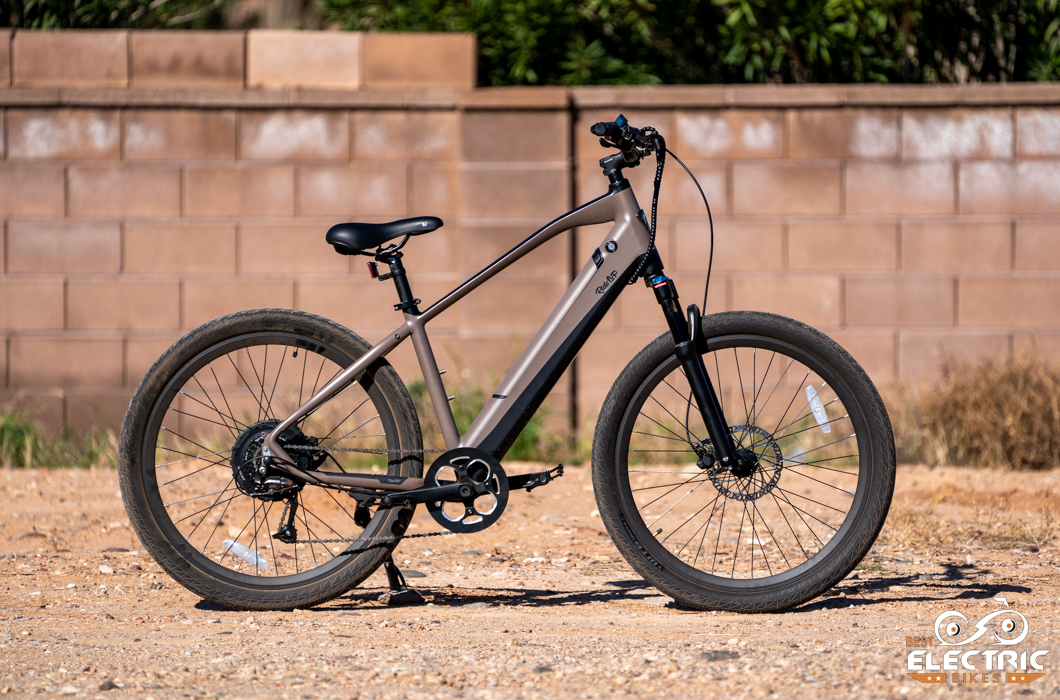
In a car, 28 mph is slow. On an e-bike, 28 mph is fast. Really fast; things happen quickly. Part of the difference is that with the wind rushing over our bodies, we have a greater sense of movement. It’s also easy to look down and see just how fast the ground is moving below us. There’s also the fact that we are closer to the ground on an e-bike. Depending on the rider, the experience can be thrilling or scary.
This is for the rider who finds that speed thrilling.
Why 28 mph?
Class 3 e-bikes are built to offer pedal assistance up to 28 mph. Most e-bikes sold conform to either Class 1 or Class 2 standards. Class 1 e-bikes offer pedal assistance up to 20 mph. Class 2 e-bikes can go up to 20 mph either on pedal assistance or with a throttle.
So why would someone want to go 28 mph on an e-bike? The Best Electric Bikes team can think of a few good reasons, but honestly, the only reason anyone needs is if it seems fun to them. Fun is enough. That whole life, liberty, pursuing happiness. And at 28 mph we might actually catch it—happiness, that is.
Synced stoplights
In many cities, signals are synced so that at a certain speed, someone can drive at a particular speed and not be stopped by a light as long as those lights remain in sync. A common experience in cities is to make a couple of green lights and then suddenly catch a red light and then arrive at each stoplight after that while it’s red. Frustrating, but not the end of the world.
Here’s a funny little secret of many cities: Lights are often synced so that someone traveling at 23 mph will arrive to one green after another. City planners often choose 23 mph or a speed near that not to inconvenience drivers, but to make for consistent travel times for buses. With the stops factored in, a bus traveling at a cruising speed of 35 mph will often see an average speed around—yep—23 mph.
That means riders on Class 1 and 2 e-bikes will roll from a stoplight and arrive to green at the next couple of lights, but soon enough they are caught by red. The rider on the Class 3 e-bike can roll from a light, accelerate up to cruising speed and if they settle into a 23 mph pace, they may see nothing but green for miles. The rider who zooms up to 28 is likely to arrive at a light before it has changed, having outrun the sync speed.
Even in cities that haven’t synced their lights to 23 mph, if the lights are synced at all, they are generally synced to a speed lower than 30 mph.
The long commute
A commute to work of 10 mi. or more is another reason someone might want to choose a Class 3 e-bike. In running short errands around a neighborhood in which trips might only see a light or two, the difference between Class 1 and 2 e-bikes vs. Class 3 e-bikes isn’t much. Being caught by one light can make a bigger difference than the top speed an e-bike can hit.
As the distance increases, so does time and the longer the distance, the more those differences are magnified. Because the cruising speed of a Class 3 e-bike can be roughly 50 percent higher than on a Class 1 or 2 e-bike, a trip that might take 30 minutes by Class 1 or 2 may only last 20 minutes when pedaling a Class 3 rig.
A reasonable question for a shopper to ask is how long a ride needs to be before driving starts to make more sense. In more rural areas where there are fewer lights and stops, the extra speed makes a noticeable difference. However, in a more urban setting, the distances need to grow to see the advantage of how the extra speed allows a rider to pedal at a speed in sync with the progression of lights.
Motor cutoff
One of the more surprising arguments for purchasing a Class 3 e-bike isn’t its top speed. Riding along at 20 mph can feel like a very comfortable speed. With Class 1 and 2 e-bikes the motor will shut off as soon as the e-bike’s speed climbs above 20 mph. That experience of pedaling just under 20 mph and then due to some dip in the road, the rider’s speed climbs to 21 mph, but the moment the e-bike’s controller detects the rider’s speed has climbed north of 20 mph, the motor shuts off. And when the motor shuts off the surprise a rider’s legs receive is, in a word, annoying.
A rider need never go 28 mph to make terrific use of an e-bike’s Class 3 performance. The rider who wants to ride near 20 mph but not worry about the motor cutting out on every downhill will like the absence of having middle management determine cruising speed.
Choices, choices
Anyone shopping for an e-bike and sitting on the fence about whether to go with a Class 3 e-bike or not would benefit from a test ride. Even if the test ride is on a brand of e-bike other than the one someone is considering, the experience of going faster than the 20 mph maximum speed of Class 1 and 2 e-bikes will inform the choice.
A few things to try during a test ride include turns to see just what speed feels comfortable, as well as stopping. An e-bike going 25 mph will need more room to stop than one going 15 mph.
The most important question is much simpler. Is the higher speed fun? If it thrills, a Class 3 e-bike might be a perfect choice.


Leave a Reply